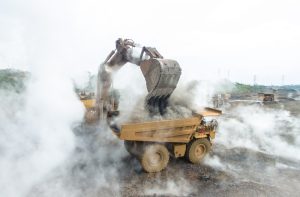Jakarta – The implementation of Indonesia’s Biodiesel B40 program, which mandates a 40% blend of palm oil-derived biodiesel, raises concerns about a potential national palm oil deficit. Experts warn that this policy could strain supplies needed for food production, particularly cooking oil.
According to the Serikat Petani Kelapa Sawit (SPKS), Indonesia’s palm oil production in 2025 is expected to decline by 5.1% due to ageing plantations requiring replanting. Meanwhile, domestic demand is surging, not only for biofuels but also for government initiatives such as the Free Nutritious Meal Program.
“We calculate that the projected demand for raw materials from CPO for the implementation of B40 reaches 14.8 million MT or an increase of 31.3% from 2024,” said Marselinus Andry, Head of the SPKS advocacy team in a statement Thursday, February 6.
He cautioned that if not managed properly, this policy could repeat the 2022 cooking oil crisis when domestic shortages and price spikes resulted from CPO being prioritised for exports and biodiesel production. Under the B35 program, the national biodiesel quota is set to rise to 15.6 million kiloliters, up from 12.98 million kiloliters.
Environmental groups have also voiced concerns that expanding land to meet the increased demand could lead to deforestation, requiring up to 138,000 hectares of new oil palm plantations.
To address the supply challenge, the government has issued new regulations restricting the export of Palm Oil Mill Effluent (POME) and High Acid Palm Oil Residue (HAPOR), prioritising these byproducts for domestic biodiesel production. However, critics argue that such measures fail to balance palm oil distribution between food and fuel needs.
Industry experts emphasise the importance of integrating independent smallholder farmers into the supply chain and exploring alternative raw materials, such as used cooking oil (UCO), to reduce reliance on fresh palm oil. Without these adjustments, Indonesia risks a worsening food versus fuel conflict, potentially leading to higher cooking oil prices and continued supply instability. (nsh)














